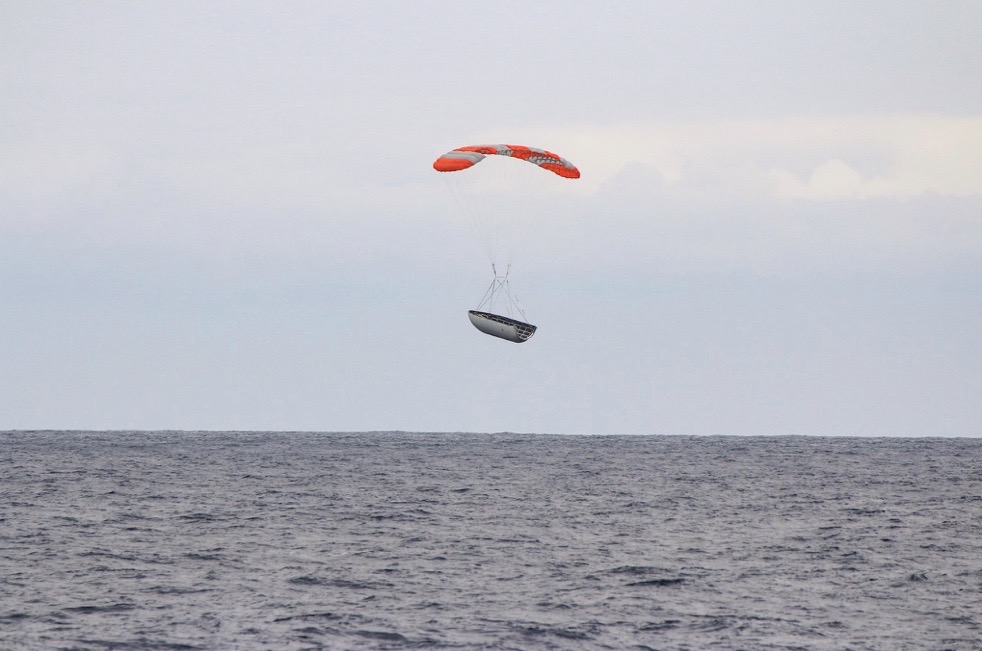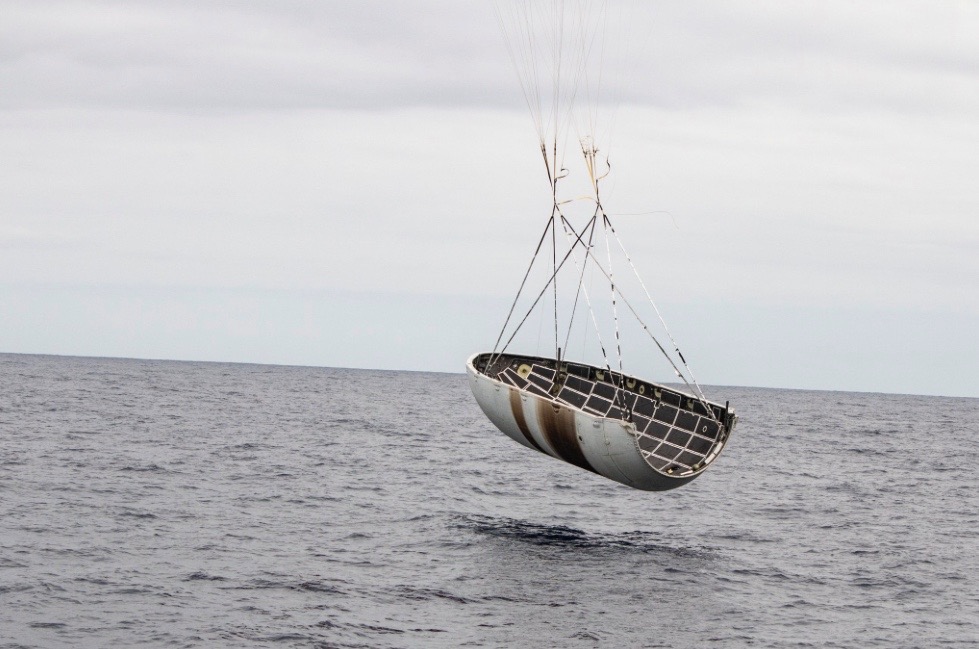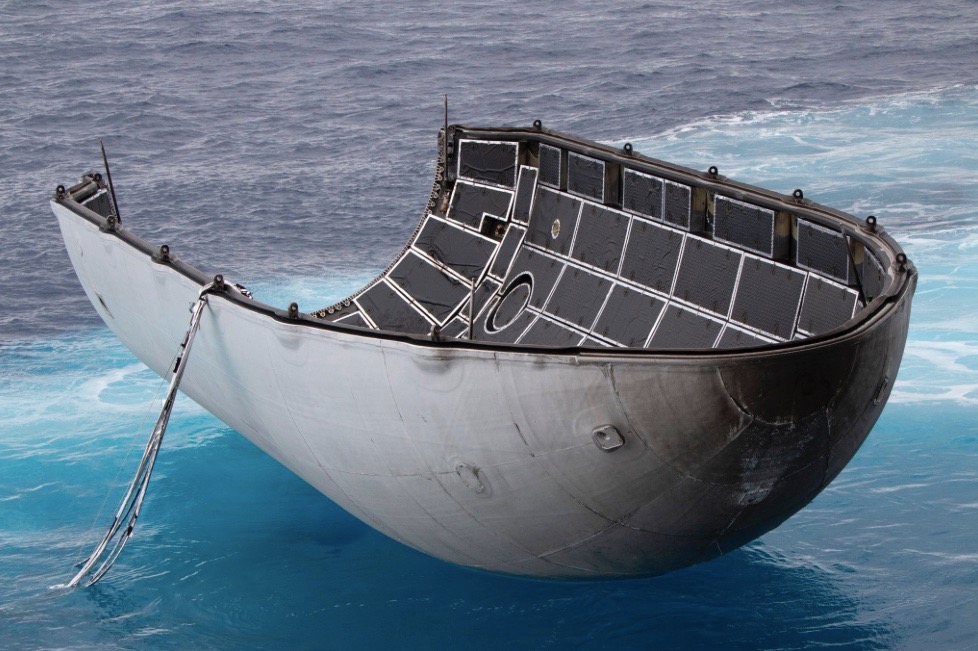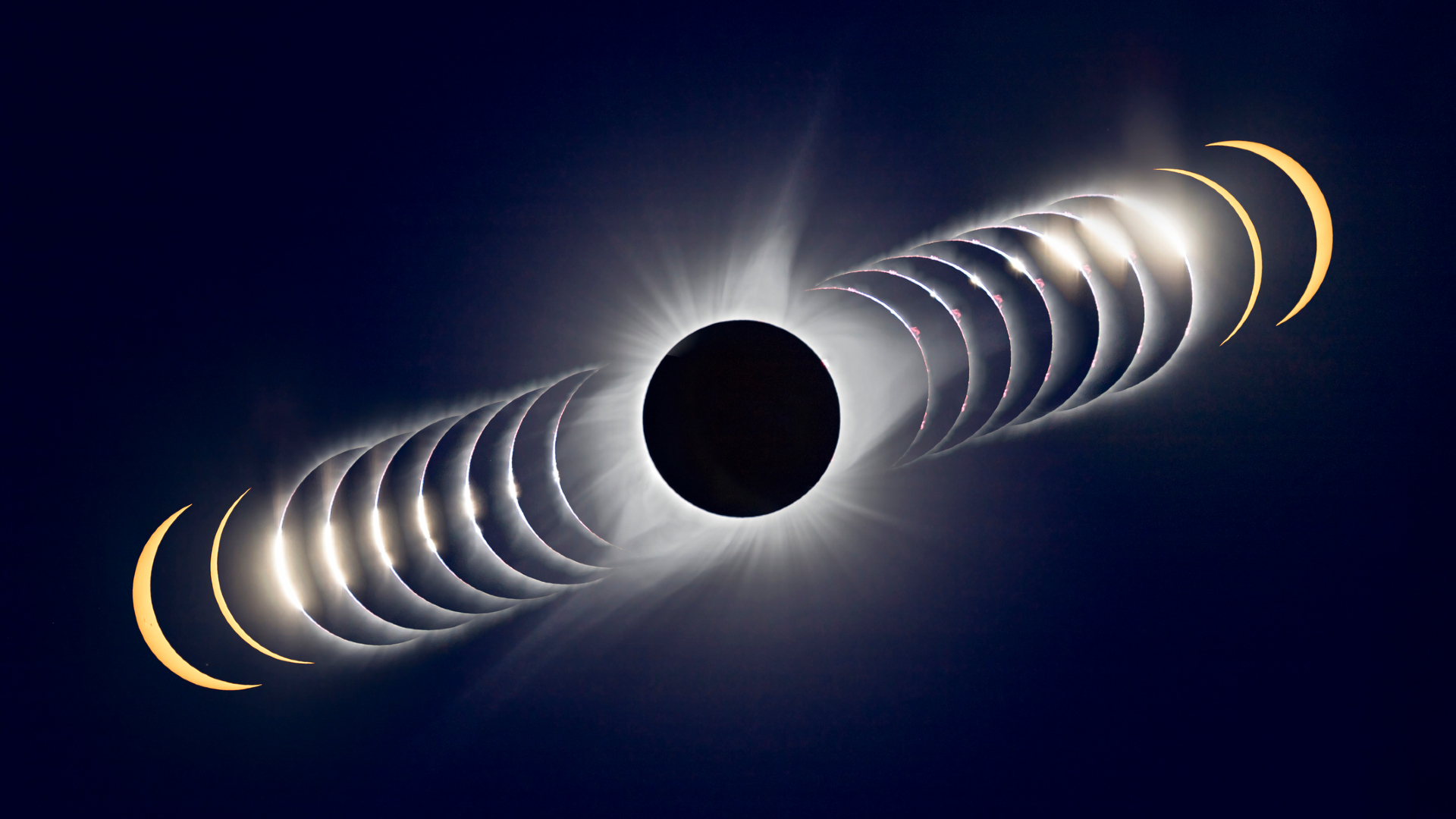SpaceX Just Missed Catching Rocket Nose Cone During Launch Last Week (Photos)

SpaceX hasn't yet plucked a falling payload fairing out of the sky, but it's getting closer.
The company's net-equipped boat, Mr. Steven, just missed catching half of the fairing that protected two NASA Earth-observation satellites during their launch atop a Falcon 9 rocket last week, SpaceX representatives said.
"Falcon 9 fairing halves deployed their parafoils and splashed down in the Pacific Ocean last week after the launch of Iridium-6/GRACE-FO. Closest half was ~50m from SpaceX’s recovery ship, Mr. Steven. http://instagram.com/p/BjdAcCuFegz," SpaceX wrote via Twitter Thursday (May 31). [See more photos of SpaceX's GRACE-FO/Iridium-6 launch]
The 205-foot-long (62 meters) Mr. Steven missed snagging a fairing half by "a few hundred meters" during a February Falcon 9 launch, SpaceX founder and CEO Elon Musk said at the time.
Falcon 9 payload fairings cost about $6 million apiece, Musk has said. SpaceX wants to catch and reuse them to help reduce the cost of spaceflight. (Salt water is extremely corrosive, which explains the need for Mr. Steven and its net.) The company already routinely lands and relaunches Falcon 9 first stages, for the same reason.
Indeed, the Falcon 9 that lifted off on May 22 featured a pre-flown first stage. The rocket launched from Vandenberg Air Force Base in California, delivering NASA's twin Gravity Recovery and Climate Experiment Follow-On (GRACE-FO) satellites to orbit, along with five Iridium Next commercial communications satellites.
The GRACE-FO spacecraft will help researchers better understand rising sea levels and other changes in Earth's water cycle, mission team members have said.
Breaking space news, the latest updates on rocket launches, skywatching events and more!
The February Falcon 9 launch that involved Mr. Steven also took off from Vandenberg. On that mission, a rocket with a pre-flown first stage successfully lofted a Spanish radar-imaging satellite and two prototypes for SpaceX's planned internet-satellite constellation, known as Starlink.
Follow Mike Wall on Twitter @michaeldwall and Google+. Follow us @Spacedotcom, Facebook orGoogle+. Originally published on Space.com.

Michael Wall is a Senior Space Writer with Space.com and joined the team in 2010. He primarily covers exoplanets, spaceflight and military space, but has been known to dabble in the space art beat. His book about the search for alien life, "Out There," was published on Nov. 13, 2018. Before becoming a science writer, Michael worked as a herpetologist and wildlife biologist. He has a Ph.D. in evolutionary biology from the University of Sydney, Australia, a bachelor's degree from the University of Arizona, and a graduate certificate in science writing from the University of California, Santa Cruz. To find out what his latest project is, you can follow Michael on Twitter.


